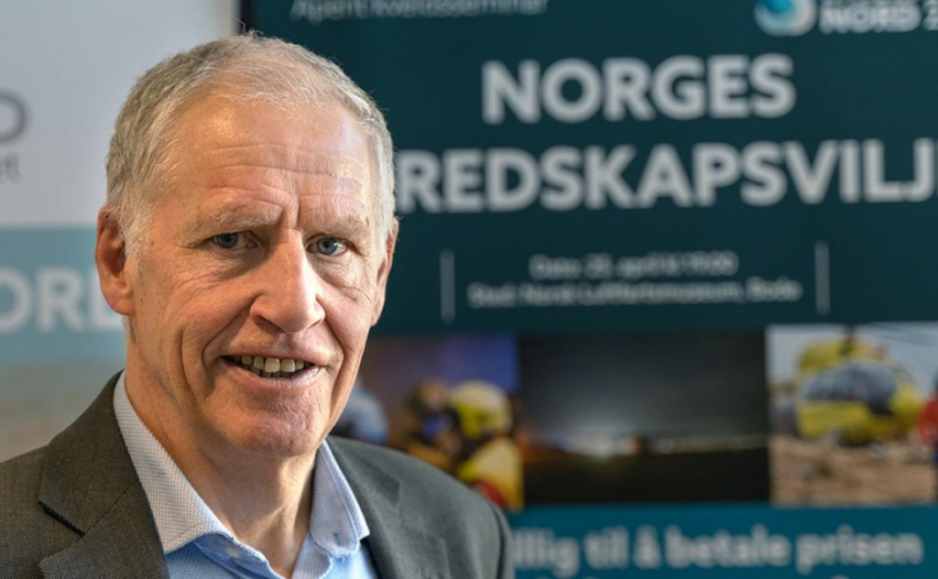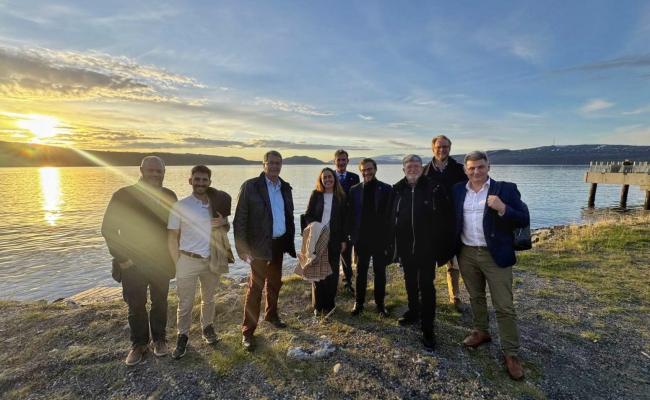Professor: Norway’s New Preparedness Proposal for the High North Falls Short

Odd Jarl Borch is a Professor of Strategy and Business Administration at Nord University. He has been the long-time leader of Nordlab – center for crisis management and collaboration at the university, and a member of the Norwegian Total Preparedness Commission appointed by the government in January 2022. (Photo: Svein-Arnt Eriksen/Nord University)
The Norwegian Government recently announced the development of a national preparedness action zone in the northernmost counties of Northern Norway. This is good in principle, but the government is late and is preparing a too small an investment, believes Professor Odd Jarl Borch.
The Norwegian Government will now follow the Total Preparedness Commission's recommendation to develop a national preparedness action zone in the counties of Troms and Finnmark in Northern Norway, it announced last week.
The action zone is to be established based on NATO's seven baseline requirements for national resilience.
"A separate investment for preparedness in the North is a good thing, fully in line with the Total Preparedness Commission's recommendation," says Odd Jarl Borch, Professor at Nord University and former member of said commission.
"At the same time, the government is late. This action zone should have been in place long ago. The north of Nordland county should also have been included, as it is a region which plays a central role in the total defense of the High North," he points out.
One must think much more broadly and include all sectors.
Starting point
As part of the follow-up work on the action zone, the Norwegian Ministry of Justice and Public Security refers to the following measures:
- The Norwegian Directorate for Civil Protection (DSB) has been asked to prioritize the High North in general and Finnmark in particular in its ongoing efforts to strengthen preparedness.
- The County Governors of Nordland, Troms and Finnmark have received support to design a risk and vulnerability analysis (RVA) for the Northern Nordic region together with their Swedish and Finnish counterparts.
- Funds have been set aside for a number of Norwegian actors to participate in the joint Nordic preparedness exercise Rescue Borealis, which will be held in Finland this fall.
- A pilot project to strengthen public preparedness and resilience in Finnmark has received NOK 2 million in the 2025 state budget.
This is not enough, argues Borch.
"The measures now introduced by the government are both minuscule and old news. All in all, this is too narrow and weak. When developing a preparedness action zone, one must think much more broadly and include all sectors," the professor maintains.
The work should be led at the highest possible level.
Input for the process
"The Total Preparedness Commission was clear that there is a need for an extensive investment in preparedness infrastructure, personnel, and expertise in the North," continues Borch.
He also believes that the development of the action zone is too large and important a task to be conducted by the Ministry of Justice and Public Security and DSB alone.
"Many ministries must be involved, and the work should be led at the highest possible level. Regional and local actors must also be included. They know where the shoe pinches."
The professor also points out that the knowledge base for drawing up measures is sufficient already.
"A joint RVA for the Northern Nordic region is important, but these analyses have already been done. We must now face the consequences of these risk analyses and produce a binding list of measures in which all sector ministries contribute," he states.
NATO's seven baseline requirements
- Assured continuity of government and critical government services
- Resilient energy supplies
- Ability to deal effectively with uncontrolled movement of people
- Resilient food and water resources
- Ability to deal with mass casualties and disruptive health crises
- Resilient civil communications systems
- Resilient transport systems
Priorities
What measures should be prioritized in the implementation of the action zone, in your opinion?
"There is much to address when it comes to preparedness in the North. Investments in transport and communication infrastructure are essential. The government should cut through and speed up the development of the power grid in Finnmark," answers Borch and continues:
"Strengthening health preparedness in Finnmark around the hospitals in Hammerfest and Kirkenes is likely the most important measure. This preparedness is already under pressure, including in regard to ambulance and pre-hospital services.
The professor also calls for stronger collaboration between the Norwegian Armed Forces Joint Medical Services and the specialist health services in the far north.
"The Armed Forces have strengthened their cooperation with the Oslo University Hospital and the University hospital of Northern Norway in Narvik. There is a lack of binding cooperation between the Armed Forces and the hospitals in Finnmark, in which the Norwegian Armed Forces Joint Medical Services contribute with extra positions. This should have the highest priority for the Chief of Defense.
"Need something that makes a difference"
At this summer's NATO summit, Norway and the other allied countries committed to invest 5 % of GDP annually on defence and security spending by 2035. Of this, 1.5 % will be allocated to defence and security-related investment in the civilian sector to support military capabilities and increase resilience.
Borch has long called for a balanced Norwegian build-up of civil and military preparedness – and considers this commitment an opportunity for sufficient financing of a civil preparedness boost in the North.
"At the same time, we must avoid that the whole thing drags on," he emphasizes.
"We lack civil preparedness as a central issue in the election campaigns [towards the 2025 Norwegian parliamentary election on September 8, ed. note]. When the newly elected government presents proposals for next year's state budget in the fall, there must be substantial measures and allocations for preparedness in the North that truly make a difference. If that doesn't happen, it will be very serious."




